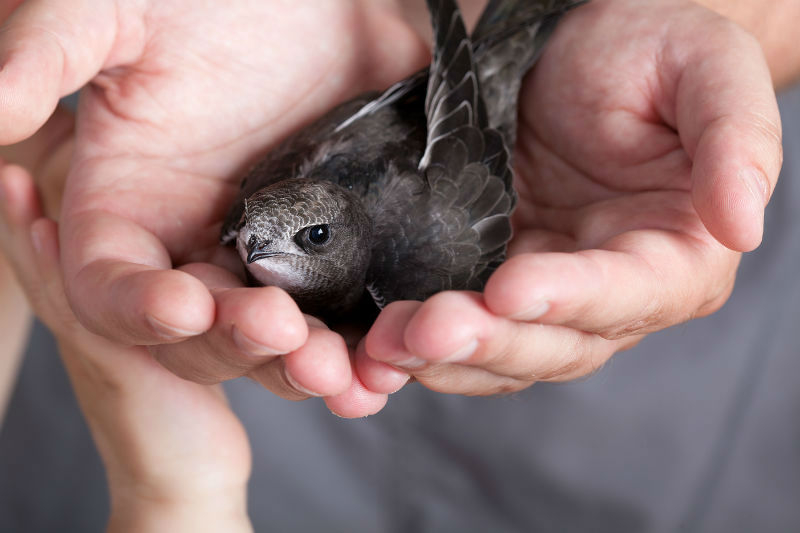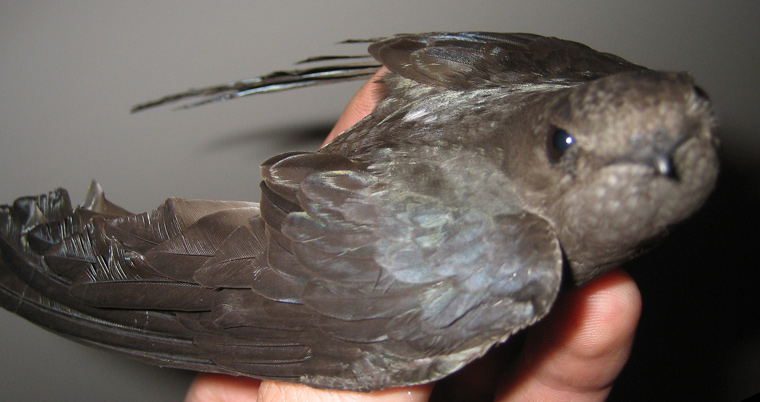To get rid of chimney swifts, you need to follow a few steps. These birds are protected, so be careful and follow legal guidelines.
Chimney swifts are small birds that often nest in chimneys. Their presence can be noisy and messy. It’s important to address this issue quickly. Chimney swifts are protected under the Migratory Bird Treaty Act. Removing them requires careful planning and respect for the law.
In this blog post, we will guide you through the process. You will learn about the safe and legal ways to remove chimney swifts from your home. This ensures both the safety of the birds and the cleanliness of your chimney. Let’s get started.
Identifying Chimney Swifts
Are you constantly hearing chirping noises from your chimney and wondering what could be making all that noise? You might be dealing with chimney swifts. These small birds are often mistaken for bats due to their rapid flight and similar nesting habits. Knowing how to identify them is the first step in resolving the issue.
Appearance
Chimney swifts are small birds with a distinctive appearance. They have slender bodies and long, curved wings. Their plumage is a sooty gray color, making them blend into the dark interiors of chimneys.
Their tails are short and squared, which sets them apart from other birds. When you see them up close, you’ll notice their big eyes and short, bristle-like beaks. These features help them catch insects while flying.
Behavior
Understanding their behavior can also help you confirm if you have chimney swifts. These birds are almost always in flight, only pausing to roost in chimneys or other vertical structures. They are known for their high-pitched, rapid “chip-chip” calls.
Chimney swifts feed on flying insects and rarely land on the ground. Their flight patterns are erratic, often resembling the flight of bats. One fascinating aspect of their behavior is their communal roosting; many swifts can be found sharing the same nesting site.
Have you ever noticed a sudden increase in bird activity around your chimney, especially at dusk or dawn? That could be a strong indicator of chimney swifts. Their presence might be a nuisance, but identifying them is the first step to finding a solution.
Why Chimney Swifts Choose Chimneys
Chimney swifts are small, gray birds known for their rapid, jerky flight. These birds often choose chimneys as their nesting sites. But why do they prefer chimneys over other places? Understanding their preferences can help you manage their presence better.
Nesting Habits
Chimney swifts have unique nesting habits. They build their nests using twigs and saliva. Their nests are small, cup-shaped, and attached to vertical surfaces. Chimneys offer the perfect structure for these nests. The dark, enclosed space provides safety from predators. The rough interior of chimneys also helps them cling and build their nests securely.
Seasonal Patterns
Chimney swifts are migratory birds. They usually arrive in North America in late spring. They stay through the summer, during their breeding season. By early fall, they migrate back to South America. Chimneys become their temporary homes during this period. The warmth of chimneys offers a good environment for raising their young.
Legal Considerations
Removing chimney swifts requires understanding legal protections. These birds are often protected by federal laws, making it illegal to disturb them during nesting. Always check local regulations before taking action.
When dealing with chimney swifts, understanding the legal considerations is crucial. These birds are not just any ordinary pests; they are protected by law. Ensuring that you comply with all legal requirements is essential in managing and eventually getting rid of them.Protected Status
Chimney swifts are protected under the Migratory Bird Treaty Act. This means you cannot harm, capture, or disturb them during their nesting season. Violating this law can result in hefty fines. I once had a client who tried to remove a nest without knowing the birds were protected. They ended up facing legal trouble. Be sure you know the rules before taking any action.Permits And Regulations
If you need to remove chimney swifts, you might require a special permit. These permits are usually issued by local wildlife authorities. The process can be time-consuming, but it is necessary for legal compliance. Check with your local wildlife agency for specific regulations. They can provide guidance on how to legally handle the situation. It’s better to be safe than sorry. Understanding these legal considerations helps you avoid fines and ensures the humane treatment of chimney swifts. Have you ever encountered legal challenges when dealing with wildlife? Share your thoughts in the comments below.
Credit: lordschimney.com
Immediate Actions
Chimney swifts can be a nuisance. They often make nests in your chimney. Taking immediate actions can help you deal with them. This section will guide you on what you can do right away.
Temporary Solutions
First, try to scare them away. Play loud noises near the chimney. Birds dislike loud sounds. This can make them leave. You can also use bright lights. Place a light in the fireplace. The light will shine up the chimney. Swifts prefer dark places. They might leave because of the light.
Emergency Measures
If you have baby swifts, be careful. They are protected by law. Do not harm them. You can call a wildlife expert. They can remove the birds safely. Also, close off the chimney if possible. Use a chimney cap or screen. This prevents more birds from entering. Make sure to fix any damage. Birds can cause harm to your chimney. Check for broken bricks or cracks. Repair them quickly to avoid more problems.
Long-term Prevention
Chimney Swifts can be a persistent problem if not addressed properly. Long-term prevention is crucial to ensure these birds don’t return. This involves a combination of physical barriers and regular maintenance.
Chimney Caps
Chimney caps are an effective solution to keep Chimney Swifts out. These caps cover the opening of your chimney, preventing birds from entering. Choose a chimney cap made of durable materials like stainless steel or copper.
Make sure the cap fits securely to avoid any gaps. A well-fitted chimney cap keeps out birds and other pests. It also prevents debris from clogging your chimney.
Maintenance Tips
Regular maintenance is key to long-term prevention. Inspect your chimney at least once a year. Look for any signs of wear or damage. Repair any cracks or holes immediately.
Cleaning your chimney is also important. A clean chimney reduces the chances of birds nesting inside. Hire a professional chimney sweep for thorough cleaning.
Check your chimney cap regularly. Make sure it is secure and in good condition. Replace it if it shows signs of wear.
Taking these steps ensures your chimney remains Swift-free. Consistent maintenance and a good chimney cap are your best defenses.
Humane Relocation Techniques
Chimney swifts often find their way into chimneys, creating a nuisance. Humane relocation techniques ensure these birds are safely moved without harm. This approach respects wildlife while maintaining your home’s comfort.
Professional Help
Hiring a professional is a reliable way to handle chimney swifts. Experts have the tools and knowledge needed for safe removal. They ensure no harm comes to the birds during the process. Professionals also check for nests and eggs, taking extra care. This method is efficient and stress-free for homeowners.
Diy Methods
Some homeowners prefer to handle the removal themselves. Start by waiting until the birds leave for the season. Seal the chimney to prevent their return. Use a chimney cap or mesh cover for this purpose. Make sure the cover is secure and fits well. This keeps the swifts out without hurting them. Another method is using sound deterrents. Play loud noises to encourage the birds to leave. This method works best during the evening.
Alternative Nesting Sites
Chimney swifts are small birds that like to nest in chimneys. To help them find a new home, you can create alternative nesting sites. These sites give the swifts a safe place to nest without causing problems in your chimney. Here are two ways to provide new nesting sites for chimney swifts.
Building Nesting Towers
Nesting towers are simple structures designed for chimney swifts. They mimic the dark, enclosed space of a chimney. You can build a tower in your yard or garden. Use materials like wood or bricks to create a sturdy tower. Make sure the tower is tall enough for the birds to feel safe. A height of 12 to 15 feet is ideal.
Place the tower away from busy areas. Chimney swifts prefer quiet spots. Paint the tower a dark color to attract the birds. Add a rough surface inside for the birds to cling to. You can find many guides online to help you build a nesting tower.
Encouraging Natural Habitats
Another way to help chimney swifts is by encouraging natural habitats. This means creating or preserving areas where the birds can nest. Trees are a great option. Plant tall trees with rough bark. Chimney swifts can use these trees as nesting sites. Avoid cutting down old trees. They often have holes and crevices that are perfect for nesting.
Maintain a bird-friendly garden. Include plants that attract insects. Chimney swifts feed on flying insects. A garden full of insects will keep the swifts well-fed. Provide a water source like a birdbath. Birds need water for drinking and bathing. A garden with food and water will attract many birds, including chimney swifts.

Credit: www.aaanimalcontrol.com
Community Efforts
Getting rid of chimney swifts requires a community effort. These birds are protected by law. It is illegal to harm them or their nests. Communities can come together to address this issue. Collaboration ensures effective and humane solutions.
Educational Programs
Educational programs play a crucial role. They inform residents about chimney swifts. People learn why these birds are protected. Understanding their habits helps in dealing with them. Workshops and seminars can be organized. These programs teach safe removal techniques. They also promote bird-friendly alternatives.
Schools and community centers can host these events. Local wildlife experts can lead the sessions. Informative brochures and flyers can be distributed. Online resources and webinars are also useful. These efforts raise awareness and encourage responsible actions.
Collaborative Initiatives
Collaborative initiatives involve working together. Neighbors can share their experiences. They can offer practical advice. Community groups can form task forces. These groups can develop action plans. Local authorities can be involved. They ensure compliance with laws. Collaborative efforts make the process smoother.
Volunteers can assist in monitoring nests. They can help in safe removal processes. Fundraising events can support these initiatives. Funds can be used for educational materials. They can also support professional services. Collaboration fosters a sense of community. It ensures that everyone plays a part.

Credit: steam-express.com
Frequently Asked Questions
How To Keep Chimney Swifts Away?
Install chimney caps to block entry. Maintain and clean your chimney regularly. Use bird deterrents like reflective tape. Seal any gaps or openings around the chimney.
How Long Will Chimney Swifts Stay In My Chimney?
Chimney swifts usually stay in your chimney from late spring to early fall. They migrate south for winter.
Can You Smoke Out Chimney Swifts?
No, smoking out chimney swifts is illegal and harmful. It can cause injury to the birds and damage your chimney.
What To Do If You Find A Chimney Swift?
Gently place the chimney swift in a small, ventilated box. Keep it warm and quiet. Contact a local wildlife rehabilitator for assistance. Avoid feeding or giving water.
Conclusion
Getting rid of chimney swifts requires patience and a clear plan. Use humane methods to protect both your home and the birds. Install chimney caps to prevent future nesting. Regularly inspect and maintain your chimney. If needed, consult a professional for safe removal.
Remember, chimneys need care just like other parts of your home. By taking these steps, you ensure a swift-free chimney and a peaceful living space.
